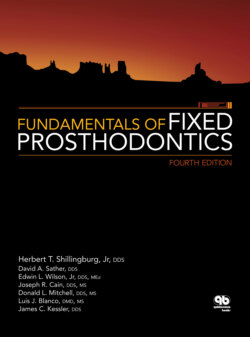Читать книгу Fundamentals of Fixed Prosthodontics - James C. Kessler - Страница 105
Selection of the Type of Prosthesis
ОглавлениеMissing teeth may be replaced by one of three prosthesis types: a removable partial denture, a tooth-supported fixed partial denture, or an implant-supported fixed partial denture (Table 7-1). Several factors must be weighed when choosing the type of prosthesis to be used in any given situation. Biomechanical, periodontal, esthetic, and financial factors, as well as the patient’s wishes, are some of the more important ones. It is not uncommon to combine two types in the same arch, such as a removable partial denture and a tooth-supported fixed partial denture. Combining teeth and implants in the support of the same fixed partial denture, however, is not recommended.
In treatment planning, there is one principle that should be kept in mind: treatment simplification. There are many times when certain treatments are technically possible but too complex. It is important to narrow the possibilities and present a recommendation that will serve the patient’s needs and still be reasonable to accomplish. At such times, the restorative dentist, or prosthodontist, is the one who should manage the sequencing and referral to other specialists. He or she will be finishing the treatment and should act as the quarterback. The restorative dentist must communicate and be open to suggestions but should not allow someone else to dictate the restorative phase of the treatment, which may result in carrying out a treatment plan that seems unfeasible. As the clinician who is providing the restoration, the restorative dentist is the one the patient will return to if it fails; therefore, he or she must be comfortable with the planned treatment.
The following are guidelines, not laws, and they are not absolute. However, when a preponderance of these items is used in the consideration of the planning for one arch or one mouth, a compelling reason exists for the selection of the type of prosthesis described.
